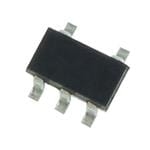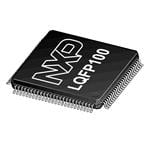Discrete Semiconductor Meaning:
Discrete semiconductor refers to individual semiconductor devices, such as transistors and diodes. These are not part of a larger integrated circuit. They’re placed on a substrate material and connected by metal leads.
Discrete semiconductors don’t form part of an IC. Still, they are sold separately from each other so they can be used in combination with other components like resistors, capacitors, inductors, etc. To make circuits that do things like process data, power relays, or control motors.
The reason discrete semiconductors are referred to as “discrete” is that they’re not integrated into a single unit like most modern ICs are today. A discrete device is composed of one or more separate parts which are connected together by wires in a circuit board.
Discrete semiconductor devices are those that can be made on a small scale and then soldered or otherwise connected together to form larger circuits.
Transistors:
Discrete transistors are used to amplify signals and control voltage levels. The most common types of transistors include field effect transistors and bipolar junction transistors.
Diodes:
Discrete diodes act as one-way electric valves that allow current to flow in only one direction through them. Diodes come in many different forms including unidirectional, bidirectional, and Zener diodes.
Thyristors:
Thyristors are similar to SCRs in that they consist of four layers of P-N silicon with a metal layer between each layer. They are available in single-component versions, where one transistor can be combined with N resistors to produce an amplifier or other circuit element. Or they may be packaged as a single integrated circuit chip containing multiple transistors and other elements such as resistors and capacitors in a single package.
Discrete Semiconductor Products:
Discrete semiconductor products are the individual components that make up a semiconductor device, such as transistors, diodes, and capacitors. The following takes EASYIEE discrete semiconductor products as an example to explain accordingly:
1. Switching Diodes:
The Switching Diode is a device that can be used to control the flow of electric current. The diode is also called a rectifier because it converts alternating current into direct current. When the voltage polarity of the AC changes, so does the polarity of the voltage across the diode.

As a result, when you put an AC signal through a diode, you get a DC output with an average value equal to that of your input signal. There are many different types of diodes, but they all have one thing in common: they only allow current flow in one direction.
2. Green LEDs:
Green LEDs are one example of a discrete semiconductor product that is used in many different types of electronics and electrical devices. Green LEDs are made with gallium nitride, which is a type of III-V compound semiconductor material that emits green light when an electric current passes through it.

Green LEDs are used in many applications such as traffic lights and electronic displays because they are brighter than red or yellow-colored lights at comparable currents.
3. Microcontrollers:
Microcontrollers are microprocessors with memory and input/output ports that are designed for embedded systems applications such as controllers, motor drives, power supplies, and industrial automation equipment.

Microcontrollers come in both single-chip and multi-chip versions and use one or more types of logic families. These are including transistor-transistor logic, complementary metal oxide semiconductors, emitter-coupled logic, and the metal oxide semiconductor.
Discrete Semiconductor Classification:
Discrete semiconductors are those that can be manufactured in any form, shape, or size. They can be used as discrete devices or integrated into an electronic circuit. The number of different types of discrete semiconductors is huge and includes transistors, logic devices, diodes, rectifiers, and voltage regulators.
Discrete semiconductors are made up of individual elements such as resistors, capacitors, and inductors. Discrete semiconductors are typically packaged in plastic or ceramic cases, but some devices may be bare silicon or germanium crystals. There are two main categories of discrete semiconductors:
Prepackaged components:
These are available in the form of chips or surface mount devices that have been tested and qualified by the manufacturer. They may also be known as packaged or modular components because they come in preconfigured packages that fit into a larger circuit board. For example, an IC may be soldered onto a PCB such as an Arduino board or Raspberry Pi to form an entire system based around it.
Custom-designed components:
These are made using individual elements such as transistors and diodes which can then be assembled into more complex circuits such as amplifiers or oscillators.
Difference Between Discrete Semiconductor and Integrated Circuit:
A discrete semiconductor can be thought of as a single atom or molecule that conducts electricity because of its structure. A solid block of metal has no conductivity. However, if you cut it into small pieces and connect the pieces with wires, each piece becomes an individualized conductor. Whatever, if the pieces are too small, they will not conduct electricity effectively because they are not large enough to carry a current without resistance.
An IC consists of multiple transistors or diodes on one chip and uses them together to perform a function such as amplifying signals or switching power on or off. You can think of it as having many “discrete” semiconductors all working together toward one goal: performing a specific function with high efficiency.
- 1. A discrete semiconductor is an individual component that has to be assembled together, whereas an Integrated circuit contains microelectronic devices on a single chip of semiconductor material.
- 2. A discrete semiconductor is used in many other applications, such as in the creation of transistors and diodes that can be used in circuits with other components. The integrated circuit is used in computers and other electronic equipment.
- 3. Discrete semiconductors are cheaper than integrated circuits because they require fewer steps to manufacture and assemble together to create a circuit board or computer chip.
Discrete Semiconductor Devices:
Discrete semiconductor devices perform a specific function and do not require any other elements to work properly. They can be found in many different types of electronic devices, from cell phones to televisions. Discrete devices can be classified into two categories: analog and digital.
Analog Devices:
Analog devices operate at low frequencies and rely on transistors to amplify, modulate or switch signals.
Digital Devices:
Digital devices operate at high frequencies, with each transistor representing one bit of information. Digital circuits are typically less complex than analog circuits because they use fewer components and have fewer connections between them.
Discrete Components Used In Electronics:
1. Resistors:
Resistors limit current flow through a circuit. They come in many shapes and sizes and have different values of resistance.
2. Capacitors:
Also known as condensers, capacitors store energy in the form of an electric field between two metal plates separated by an insulator called a dielectric material. The capacitance value depends on the surface area of the plates, the distance between them, and the type of dielectric material used.
Capacitors are used for filtering out high-frequency signals from low-frequency signals or for smoothing out voltage fluctuations from DC power sources such as batteries or solar cells.
Processes For Discrete Semiconductor:
Discrete semiconductors are manufactured using a variety of different processes. Some of the most common semiconductor manufacturing processes include:
CMOS and Bipolar:
These two processes are used to make both digital and analog circuits. Complementary Metal Oxide Semiconductor refers to a type of bipolar process that uses complementary transistors.
These transistors have different characteristics that allow them to be combined in ways that create circuits with very high speeds and low power consumption. CMOS and bipolar technology are used for making microprocessors, memories, and other logic chips.
MOSFETs (Metal Oxide Semiconductor Field Effect Transistors):
MOSFETs are used in digital circuits as well as power amplifiers for radios and televisions. MOSFETs are also used in many types of sensors, such as those found in automobile emissions control systems.
The photolithography process involves a pattern of light projected onto the surface of the photoresist, which is then exposed to UV light. The portions of the surface that are exposed to UV light harden, becoming more resistant to etching. The unexposed areas remain soft and can be removed by chemical etching.
IGBTs (Insulated Gate Bipolar Transistors):
IGBTs are used in high-voltage applications such as electric cars or power tools because they can withstand much higher voltages than MOSFETs without fail.
Conclusion:
Discrete semiconductor means that semiconductors are not grown on an integrated circuit, but rather made as a separate element. Discrete semiconductors have been in existence for a long time, it is possible to make your own discrete transistor or diode from raw materials such as germanium or silicon.
A semiconductor device is an electrical and electronic device that is designed to regulate the flow of electrons. In order to control an electric current, which usually leads to the desired effect. Semiconductor devices are made up of a number of discrete components, hence their name.
A more precise definition is provided by Dr. Steven Downhower of Virginia Tech: “Discrete means ‘separated’ -as in separated into individual cells or components”. In addition, “semiconductor” refers both to the materials from which most semiconductor devices are constructed, as well as to the devices themselves.





 2022-11-24
2022-11-24 


